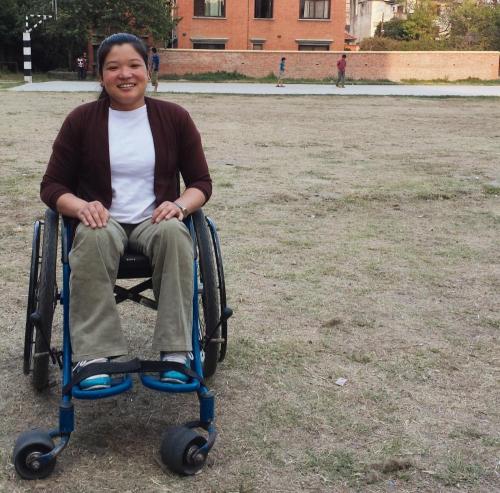
Yami Jhankri Magar uses wheelchair for personal mobility to maximise her independence and social participation as a result of an acquired disability. Currently, she is completing her undergraduate studies and works full time as an accountant. Yami aspires to pursue bigger roles in finance and accounting agencies or the government banking sector — a right every PWD has on an equal basis with other Nepali citizens — to pursue an occupation of one’s interest. However, while some PWD have been fairly noticed participating in informal economy such as candle and incense making and waiters/waitresses, the participation of PWD in formal economy, one that Yami is aspiring to join is not quite evident.
The labour market of PWD
The World Report on Disability, jointly published by the WHO and World Bank in 2011, reiterates the labour markets being largely informal with many PWD being self-employed. Informal economy is a country’s unmonitored part of economy such as, home-based enterprises and small businesses employing a few workers. Whether this dominance is due to less PWD acquiring higher education and or less integration programmes in formal jobs, is a growing concern globally and in research.
Nevertheless, Nepal being a state party of the United Nations Convention on the Rights of Persons with Disabilities (CRPD), is obligated to fulfill all articles of the CRPD to create disability inclusive communities. Article 27 covering work and employment, fully protects and supports Magar’s occupational choice as the right “to gain a living by work freely chosen or accepted in a labour market.” However, six years after Nepal has ratified this international human rights treaty on May 7 2010, the measurable extent to which employers are beginning to identify and eliminate barriers at workplaces is not distinguishable yet.
Disability Inclusion Specialist, Andrew Lange, currently based in New York, who is part of my research states that, “The Optional Protocol to the CRPD has an individual communication procedure, which allows individuals or groups of individuals who believe that their rights have been or are being violated by a State Party to submit a complaint to the Committee on the CRPD.” He says, “It is best to contact the Committee and its members through the Secretariat of the CRPD Committee at the Office for the High Commissioner for Human Rights via email at crpd@ohchr.org.” Awareness of the rights entitled to PWD by the CRPD must be disseminated beyond stakeholders working towards amendments of legislations, policies and programmes, importantly, to every PWD and their families to enable making informed decisions
Closing the gap implementing a new comprehensive model
What Yami or individuals “who acquire a disability during the course of employment” (Article 27), need is employment support programmes to assist with joining or returning to work (RTW). To close this formal versus informal workforce participation gap, Nepal is likely to benefit from a comprehensive inclusion model that not only links PWD into the communities through vocation but also employment services. This ‘Biopsychosocial’ model is comprehensive in that it addresses the person’s health condition, psychological and social barriers. In Magar’s current case, some of the aspects this comprehensive model will cover are; monitoring health (medication and or management), providing on-going support (accommodated transportation etcetera) to assist with her education completion in order to achieve the final goal of securing and staying in employment.
To accomplish larger workforce integration through this model, effective legislations must be brought into effect and policy reforms accelerated in motivating more employers to hire PWD and for PWD to stay in the workforce. Non-discriminatory strategies must be ensured in the process of hiring, employment and career progression of PWD. Most importantly, our perception needs to further advance towards focusing on the person’s interest and abilities instead of the impairments or the inabilities. This will not only optimise productivity at work but also retain PWD in the workforce facilitating disability inclusive development (DID).
The author is a Disability Inclusion Consultant. She gained work experiences as a Rehabilitation Consultant and DES Employment Consultant while in Sydney, Australia. She also heads Health and Rehabilitation for Bihani Social Venture, and is currently based in Nepal. Samridhi is an Australia Awards Scholar. She can be reached at samridhirthapa@gmail.com / @samridhi_rana (twitter)










Add new comment